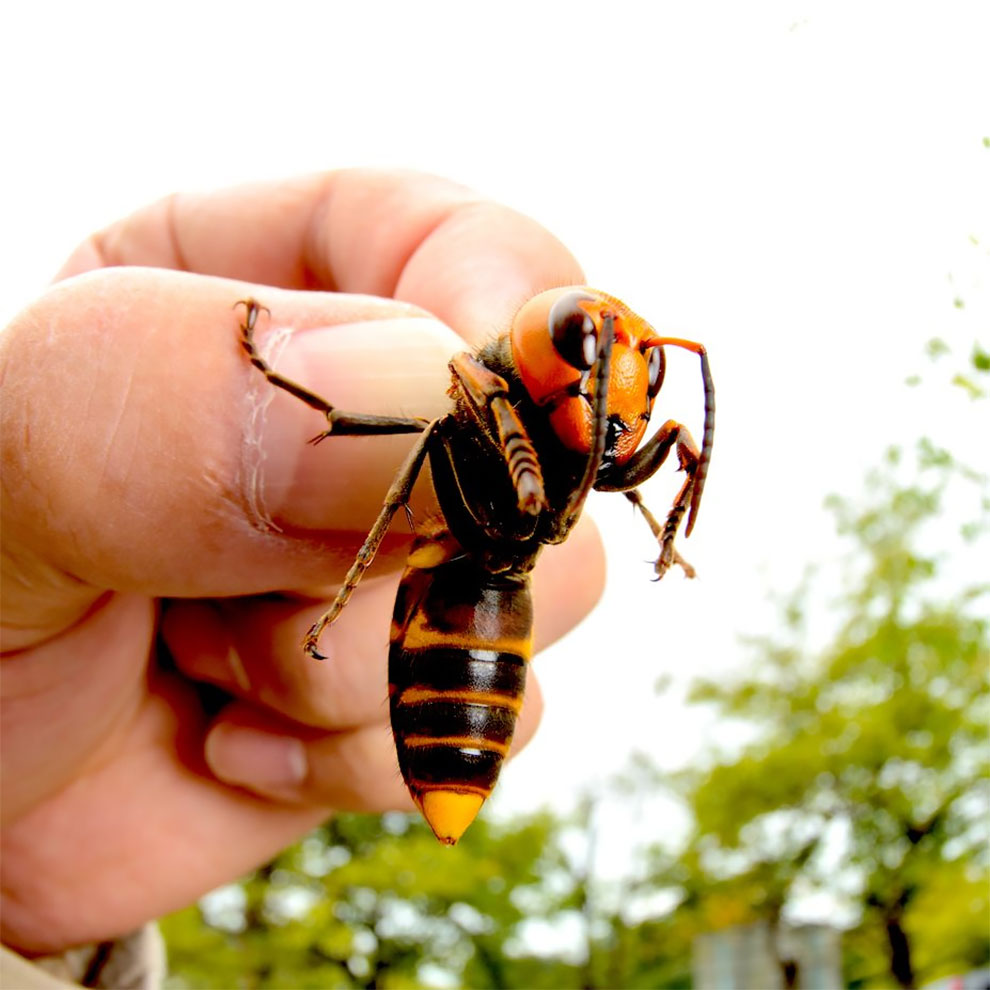Wearing Futuristic Protective Suits, Washington State Crews Destroy First US Murder Hornet Nest

AP
Heavily protected crews worked in Washington state on Saturday to destroy the first nest of so-called murder hornets discovered in the United States.
h/t: guardian
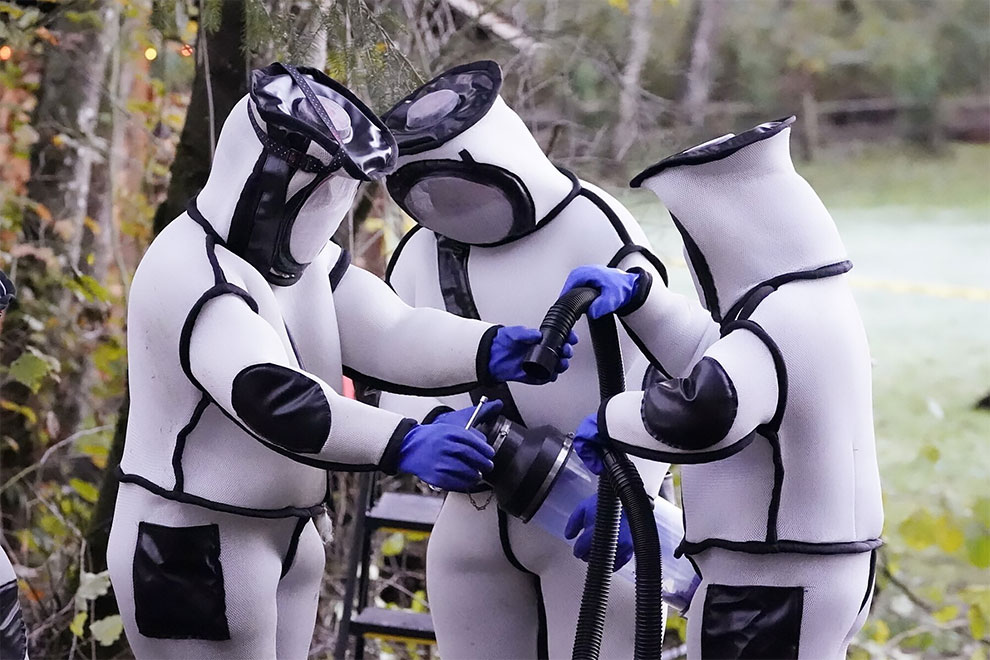
The state agriculture department spent weeks searching, trapping and using dental floss to tie tracking devices to Asian giant hornets, which can deliver painful stings to people and spit venom but are the biggest threat to honeybees farmers depend on to pollinate crops.
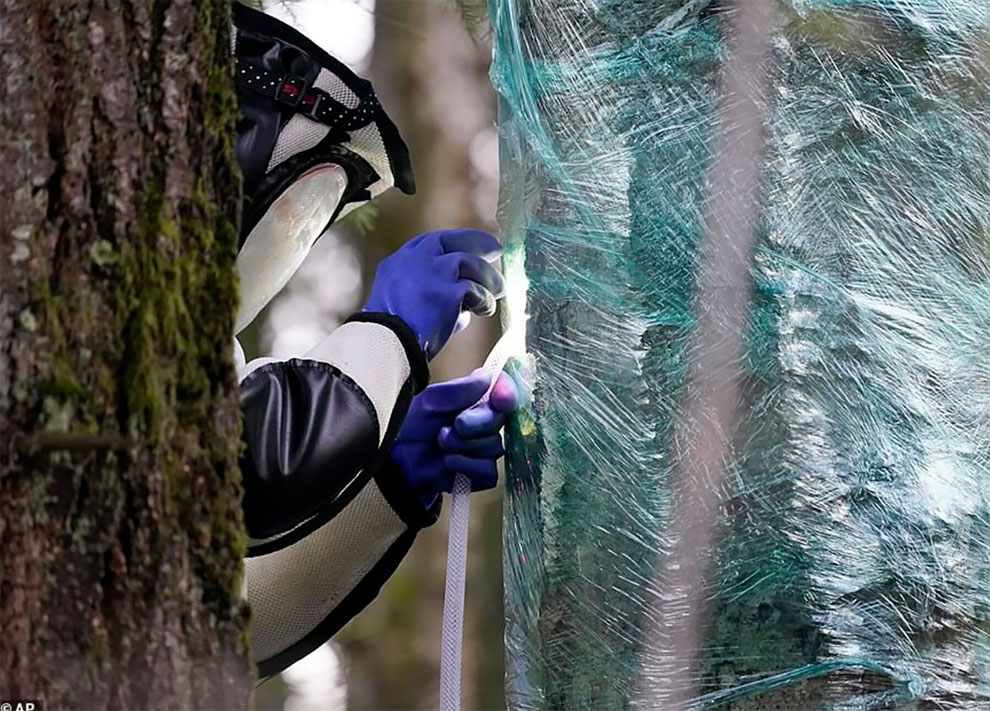
AP
The nest found in the city of Blaine near the Canadian border was about the size of a basketball and contained an estimated 100 to 200 hornets. Crews wearing thick protective suits vacuumed the invasive insects from the cavity of a tree into large canisters. The suits stopped the hornets’ 6mm stingers hurting workers, who also wore face shields because the trapped hornets were capable of spitting a painful venom.
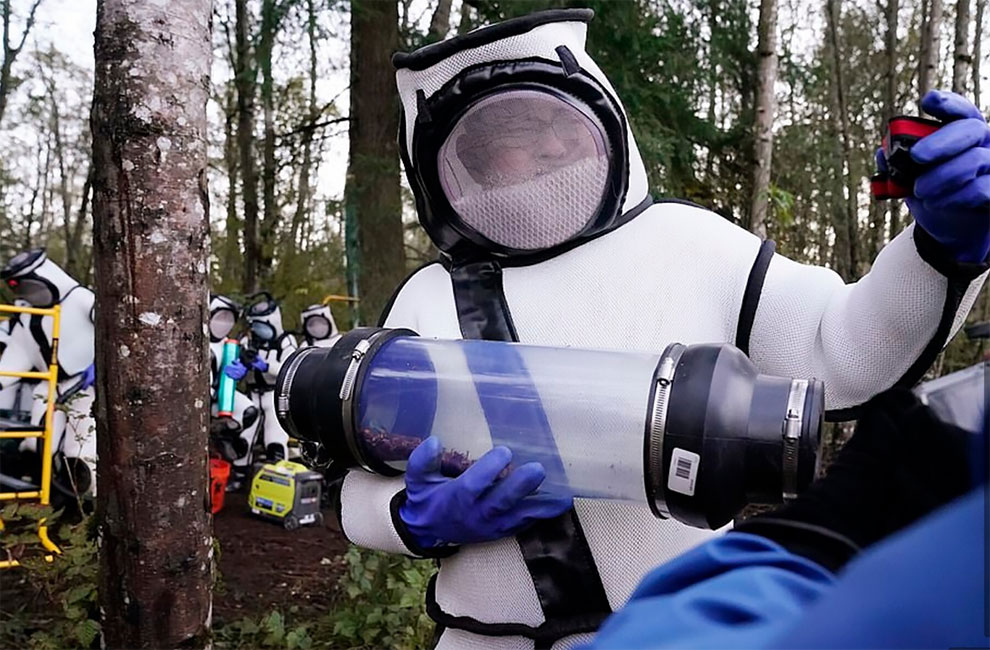
AP
The tree will be cut down to extract newborn hornets and learn if any queens have left the hive, scientists said. Officials suspect more nests may be in the area and will keep searching.
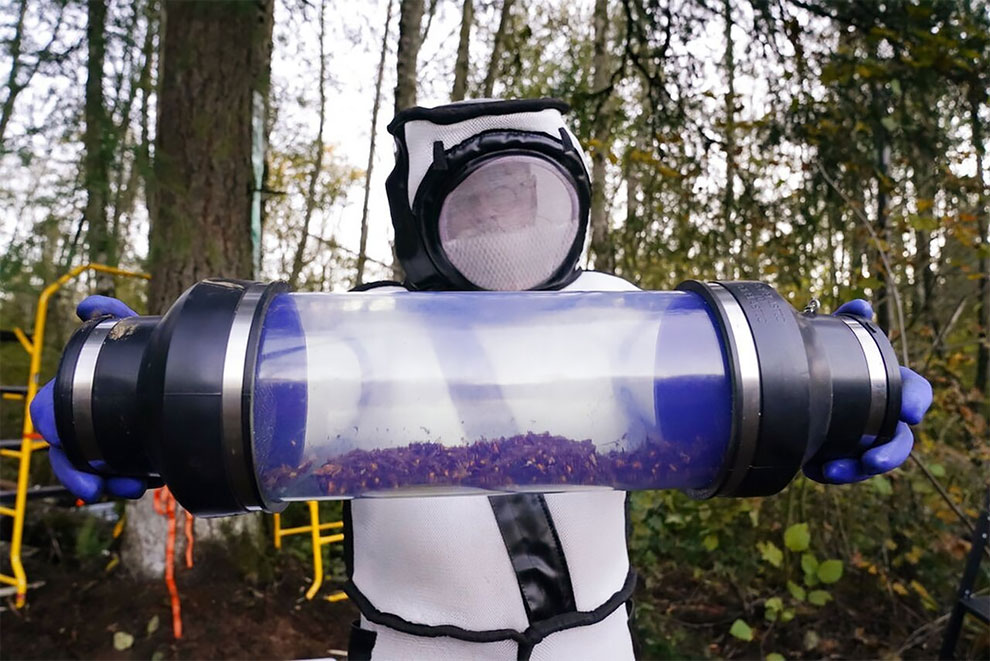
AP

AP

AP
Okay, meet Asian giant hornet!
The Asian giant hornet (Vespa mandarinia) is the world’s largest hornet. It is native to temperate and tropical East Asia, South Asia, Mainland Southeast Asia, and parts of the Russian Far East. It was also found in the Pacific Northwest of North America in late 2019, with a few more additional sightings in 2020. They prefer to live in low mountains and forests, while almost completely avoiding plains and high-altitude climates.
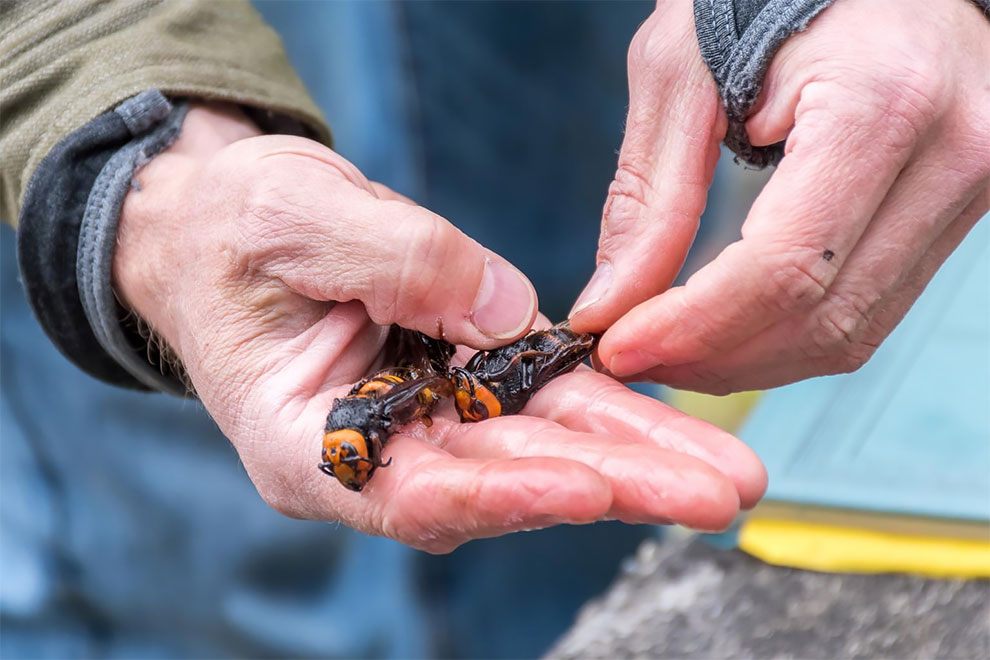
V. mandarinia creates nests by digging, co-opting pre-existing tunnels dug by rodents, or occupying spaces near rotted pine roots. It feeds primarily on larger insects, colonies of other eusocial insects, tree sap, and honey from honey bee colonies. The hornet has a body length of 45 millimetres (1 3⁄4 inches), a wingspan around 75 mm (3 in), and a stinger 6 mm (1⁄4 in) long, which injects a large amount of potent venom.
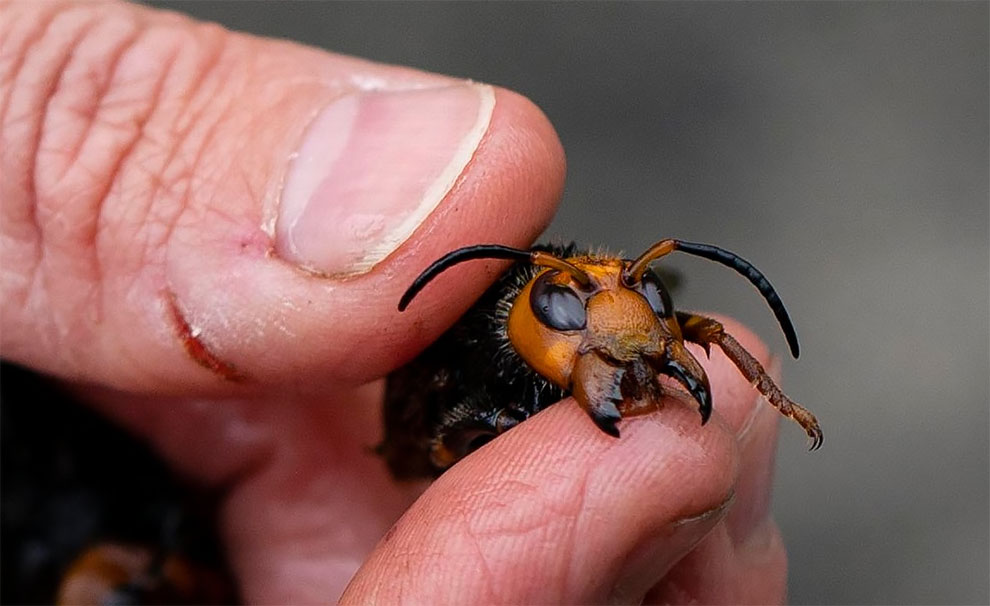
The venom contains a neurotoxin called mandaratoxin, a single-chain polypeptide with a molecular weight around 20 kDa. While a single wasp cannot inject a lethal dose, it can be lethal even to people who are not allergic if the dose is sufficient (i.e., if multiple stings are received). However, if the victim is allergic to the venom, this greatly increases the risk of death.

